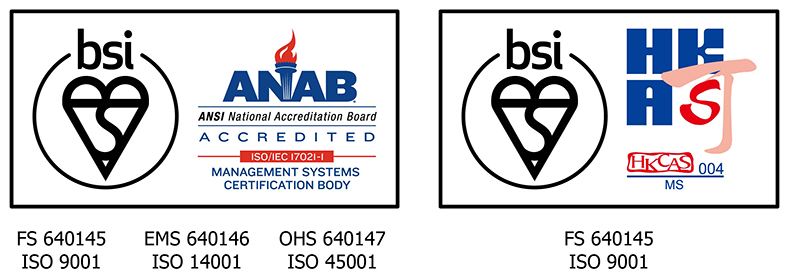Red fire ant is a collective name for a group of ants and one important pest species is the Red Imported Fire Ant (RIFA), Solenopsis invicta (more on RIFA biology……). In 2005, the Hong Kong Government confirmed that RIFA had infested and spread in the territory. RIFA is still active in some areas in Hong Kong.
RIFA Hazards
Hazards imposed on human beings mainly include:
- Safety Hazards
RIFA often build their nests in electrical and electronic facilities such as switch boxes, communication utilities cupboards, traffic light control panels, airport runway lighting devices, security automation devices, etc. They have caused damages to the facilities and could lead to serious consequent. - Health hazards
RIFA may bite and sting if disturbed. The insect stings could cause pain, itching, burning and blister formation to skin. For severe situations, the stings could cause severe acute allergic reactions which may lead to shock or even death. - Ecological Hazards
RIFA colonies could be huge and widespread. They could damage the ecology since they are aggressive and attacking a number of vertebrates and invertebrates. - Economical Loss
RIFA could also cause damages to agricultural products by consuming the seeds, fruits, green leaves and roots of plants.
Recognizing RIFA
RIFA could be found in grasslands, bushes, gardens, golf courses, roadsides, agricultural fields, etc. Some basic characteristics of RIFA are:
- RIFA would build up ant mounds of 10 to 45 cm high at the entries of their nests.
- RIFA nests exhibit similar structure of a beehive.
- If disturbed, RIFA will attack aggressively instead of running away.
Baguio pest management technicians are well experienced in managing RIFA infestations in landscapes, pavements, vacant lands, relics gardens, airport airfield grasslands, etc. Our RIFA management methods include surveys, physical control, chemical control and monitoring.
RIFA Survey
Basically, we adopt the walk-and-search approach to identify signs of RIFA including active ant mounds, foraging trails, etc. We will also inspect potential RIFA nesting places such as electrical facilities. Sampling collection by baiting may also be taken, if species identification is necessary.
Physical Control
Physical control methods will be recommended if clients want to have a pesticide free service for minor infestation. For example, using boiling water to kill ant colonies:
Hot Water Treatment
Pour plenty of boiling water (at least 6 litres for every ant mound) into the identified ant nest and make sure the hot water has reached all nest areas as far as possible. This could kill about 60% of the mound population. Repeat the treatment every 5 to 10 days for 3 to 4 times. Take necessary safety precautions to avoid personal injury or damages to other living things nearby.
Chemical Control
Chemical control against RIFA implies using pesticides to kill ant colonies. The formulation, dosage and application method of pesticide vary with the seriousness of infestation and the environments of the infested area. Chemical control methods include poisonous baiting and killing by contact insecticides. The application methods are described in the following paragraphs.
Poisonous Baiting
Use RIFA preferred food as bait and formulate with selected pesticides to produce poisonous bait granules. In order to allow the worker ants to bring the poisonous baits back to feed other members of the colony, the selected pesticides are usually slow acting insecticides or insect growth regulators. Therefore, it normally takes about 2 to 6 weeks for the effects being seen.
Bait application is better done in the morning or late afternoon when RIFA activities are more active and should not be conducted before or after raining. Bait application procedures include:
- Individual Mound Treatment ------ Apply appropriate quantity (according to manufacturer's instruction) of poisonous bait at a 30 to 100 cm distance around the base of the ant mound.
- Broadcasting Treatment ------ Applicable to widespread infestation (e.g. more than 20 ant mounds in a piece of land of 100 m2 ). Use manual or mechanical broadcasting machines, depending on the size of the infested areas, to broadcast the bait granules.
Contact Insecticides
Use contact poisonous or slow-releasing insecticides to the population size of RIFA. Application methods include:
- Drenching ------ This is suitable for treating individual ant mound. Dilute selected insecticides (e.g. Permethrin EC 10%w/v; Cypermethrin EC 5%w/v) according to manufacturer's instructions and drench along the circumference of 30 to 100 cm from the mound base. Next, pour about 4 litres of diluted insecticide solution on the top of the ant mound and then destroy the mound. Finally, pour another 4 litres of insecticide solution until the whole mound is thoroughly wet.
- Broadcasting of Insecticide Granule ------ This is suitable for widespread infestation with many ant mounds. Use manual or mechanical broadcasting machines to spread the slow-releasing insecticides (e.g. slow-acting contact insecticide, fipronil 0.0143%w/w granule) on the ground surfaces and then wet the surfaces with water.
Combined Approach
Apply poisonous baiting and contact insecticides at different stages. First stage - apply poisonous baits at RIFA foraging areas. Second stage – after 7 to 10 days, drench contact insecticides to ant mounds and destroy the nests.
Monitoring
Eradication of RIFA, particularly for widespread infestation, requires continuous assessment and monitoring. Our technicians will do the preparation during the RIFA surveys and conduct following up inspections to assess the effectiveness of control measures. Details of surveys, assessment and monitoring will be recorded accordingly.
To learn more on Baguio Pest Control Services, please contact us.





